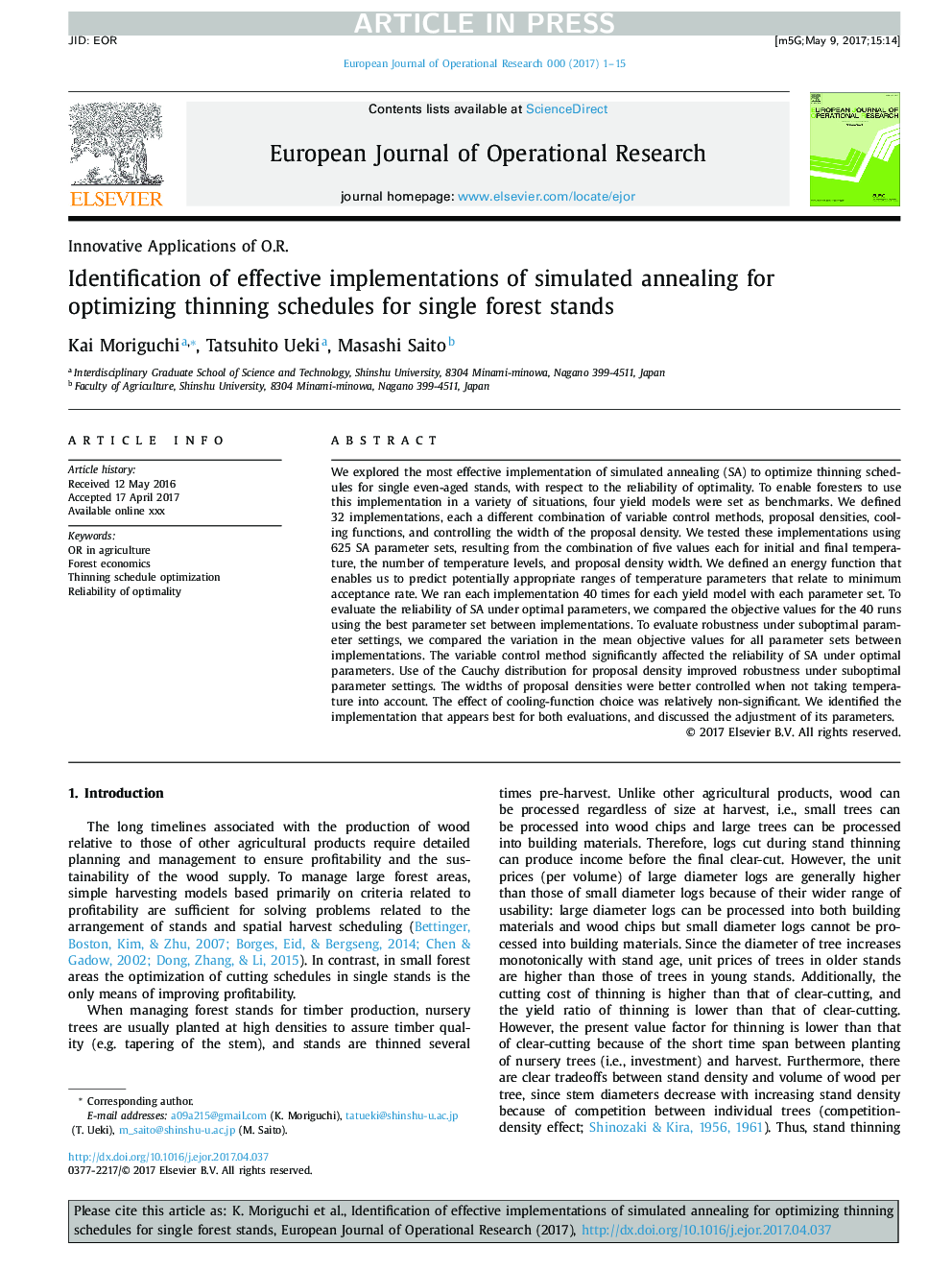| Article ID | Journal | Published Year | Pages | File Type |
|---|---|---|---|---|
| 4959590 | European Journal of Operational Research | 2017 | 15 Pages |
Abstract
We explored the most effective implementation of simulated annealing (SA) to optimize thinning schedules for single even-aged stands, with respect to the reliability of optimality. To enable foresters to use this implementation in a variety of situations, four yield models were set as benchmarks. We defined 32 implementations, each a different combination of variable control methods, proposal densities, cooling functions, and controlling the width of the proposal density. We tested these implementations using 625 SA parameter sets, resulting from the combination of five values each for initial and final temperature, the number of temperature levels, and proposal density width. We defined an energy function that enables us to predict potentially appropriate ranges of temperature parameters that relate to minimum acceptance rate. We ran each implementation 40 times for each yield model with each parameter set. To evaluate the reliability of SA under optimal parameters, we compared the objective values for the 40 runs using the best parameter set between implementations. To evaluate robustness under suboptimal parameter settings, we compared the variation in the mean objective values for all parameter sets between implementations. The variable control method significantly affected the reliability of SA under optimal parameters. Use of the Cauchy distribution for proposal density improved robustness under suboptimal parameter settings. The widths of proposal densities were better controlled when not taking temperature into account. The effect of cooling-function choice was relatively non-significant. We identified the implementation that appears best for both evaluations, and discussed the adjustment of its parameters.
Keywords
Related Topics
Physical Sciences and Engineering
Computer Science
Computer Science (General)
Authors
Kai Moriguchi, Tatsuhito Ueki, Masashi Saito,
